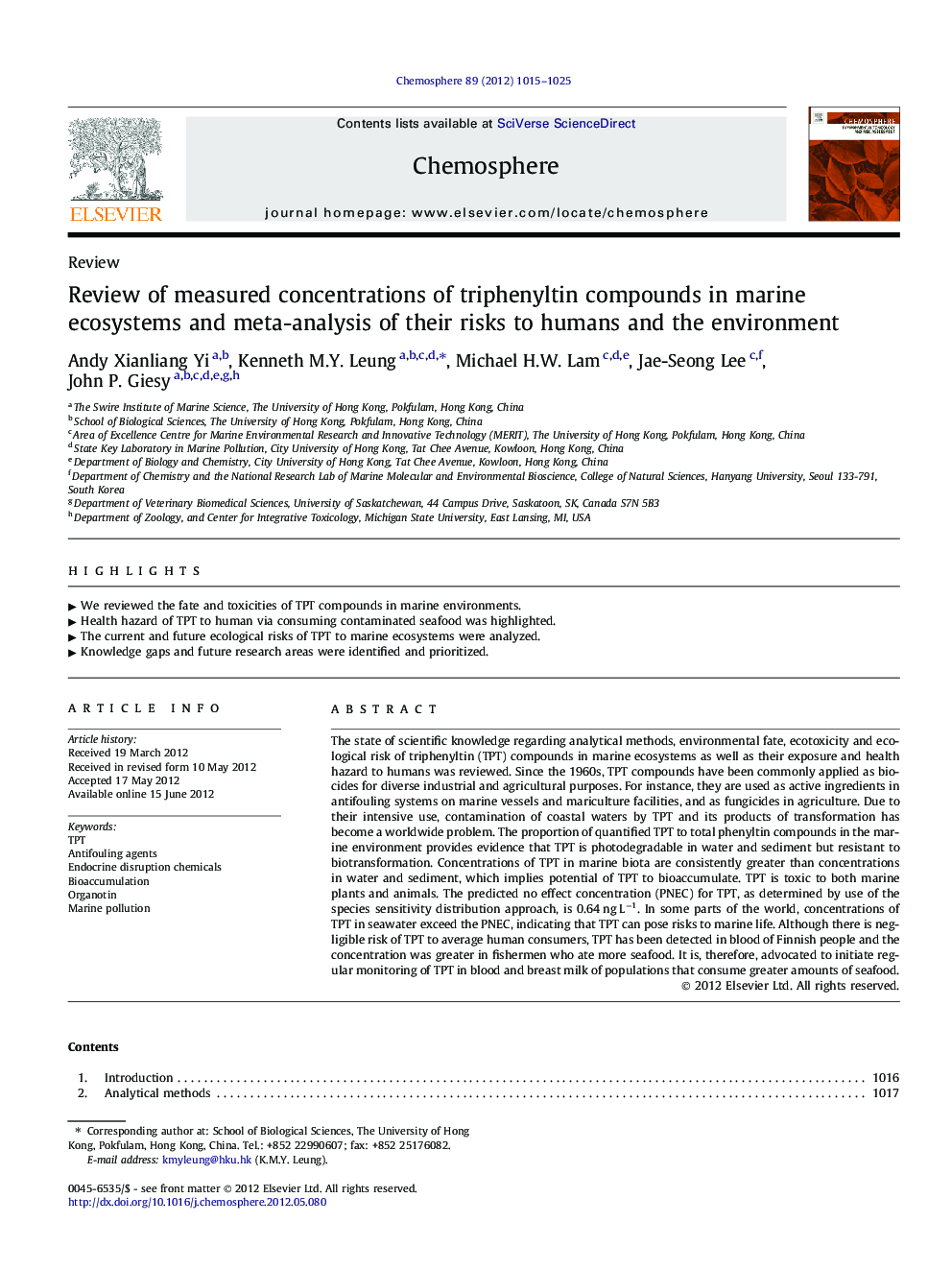| Article ID | Journal | Published Year | Pages | File Type |
|---|---|---|---|---|
| 4409812 | Chemosphere | 2012 | 11 Pages |
The state of scientific knowledge regarding analytical methods, environmental fate, ecotoxicity and ecological risk of triphenyltin (TPT) compounds in marine ecosystems as well as their exposure and health hazard to humans was reviewed. Since the 1960s, TPT compounds have been commonly applied as biocides for diverse industrial and agricultural purposes. For instance, they are used as active ingredients in antifouling systems on marine vessels and mariculture facilities, and as fungicides in agriculture. Due to their intensive use, contamination of coastal waters by TPT and its products of transformation has become a worldwide problem. The proportion of quantified TPT to total phenyltin compounds in the marine environment provides evidence that TPT is photodegradable in water and sediment but resistant to biotransformation. Concentrations of TPT in marine biota are consistently greater than concentrations in water and sediment, which implies potential of TPT to bioaccumulate. TPT is toxic to both marine plants and animals. The predicted no effect concentration (PNEC) for TPT, as determined by use of the species sensitivity distribution approach, is 0.64 ng L−1. In some parts of the world, concentrations of TPT in seawater exceed the PNEC, indicating that TPT can pose risks to marine life. Although there is negligible risk of TPT to average human consumers, TPT has been detected in blood of Finnish people and the concentration was greater in fishermen who ate more seafood. It is, therefore, advocated to initiate regular monitoring of TPT in blood and breast milk of populations that consume greater amounts of seafood.
► We reviewed the fate and toxicities of TPT compounds in marine environments. ► Health hazard of TPT to human via consuming contaminated seafood was highlighted. ► The current and future ecological risks of TPT to marine ecosystems were analyzed. ► Knowledge gaps and future research areas were identified and prioritized.
